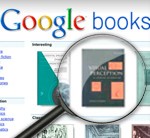 Following reports by Randall Stross in The New York Times and elsewhere that Apple had filed a patent application for technology that forces users of mobile or other devices to watch ads, the blogosphere lit up with lamentations. One blogger quoted by The Independent on Monday, to pick a representative example, called it “the most invasive, demeaning, anti-utopian and downright horrible piece of cross-platform software technology that anybody’s ever thought of.”
Following reports by Randall Stross in The New York Times and elsewhere that Apple had filed a patent application for technology that forces users of mobile or other devices to watch ads, the blogosphere lit up with lamentations. One blogger quoted by The Independent on Monday, to pick a representative example, called it “the most invasive, demeaning, anti-utopian and downright horrible piece of cross-platform software technology that anybody’s ever thought of.”
Sigh. Slow down, folks.
As Randy Stross correctly pointed out in his article, applying for a patent does not indicate an intention to use the technology in question. I also put very little significance to the fact that Steve Jobs himself is named as one of the inventors of the patent.
Here’s the reality. Companies file patent, trademark, and copyright applications for a variety of reasons. These days, perhaps the most common reason to file a patent is defensive; that is, to ensure that another patent holder can’t sue you for infringement, especially problematic given the absurdly broad applications that the Patent Office has been routinely granting in the last decade. (See my earlier post on the Bilski case.) If sued by a competitor, dormant patents can be useful bargaining chips in cross-licensing, pooling or other industry arrangements.
More to the point, the connection between patent filings and corporate strategy, especially for large technology companies, is generally nonexistent. For better and often for worse, company lawyers and the rest of the executive team historically only speak when something goes wrong.
Recently there have been movements to treat patents and other information assets using the same asset management tools applied to physical plant. That’s a good first step, but hardly the end of the road here. The full integration of legal and business strategy, including for patents, isn’t even a dream most executives dare to dream.
Apple’s patent filing almost certainly signals nothing about the company’s future intentions one way or the other.
There’s plenty of things for bloggers to get agitated about. This isn’t one of them.

 My view on today’s Supreme Court case regarding business method and software patents
My view on today’s Supreme Court case regarding business method and software patents  Though most of the coverage of this year’s Nobel Prize in Economics focused on the work of Elinor Ostrom, I’m more interested in the award to Oliver Williamson, Prof. Emeritus at the Haas School of Business at UC-Berkeley.
Though most of the coverage of this year’s Nobel Prize in Economics focused on the work of Elinor Ostrom, I’m more interested in the award to Oliver Williamson, Prof. Emeritus at the Haas School of Business at UC-Berkeley.